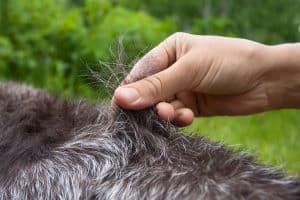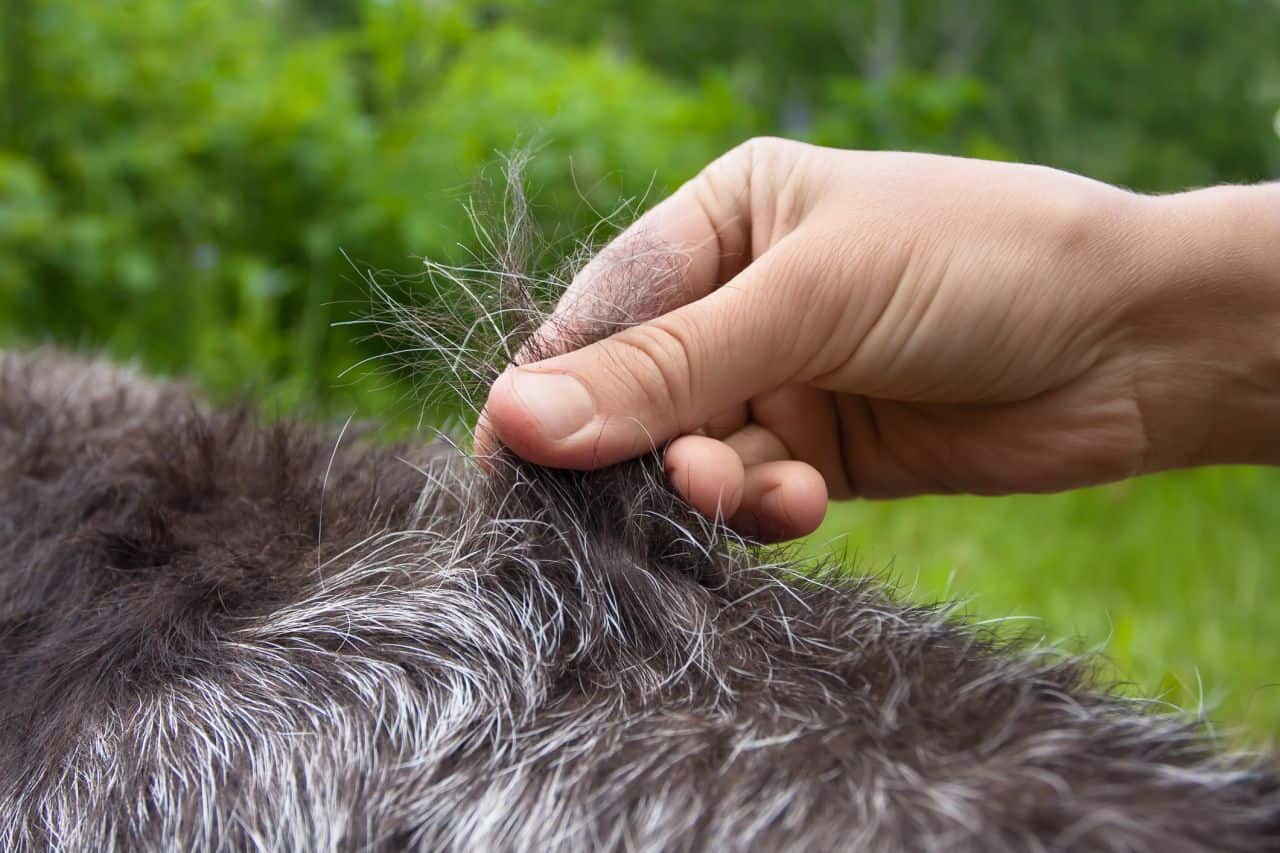The art of hand plucking and stripping is effective and can produce a lovely finish on a dog’s coat if you have taken the time to master the techniques, but it is time consuming in the early stages of your learning. This is a process that removes a percentage of the dog’s topcoat or guard hairs, whilst leaving the undercoat hairs untouched.
It should not be confused with Carding the Coat , which is a useful method of removing the dog’s undercoat. Plucking, by contrast, is a method of stripping out or shortening the dog’s topcoat. It existed long before the invention of clippers and the skill is still very much sought after today by pet owners.
Hand plucking and stripping are considered cruel, stressful and unnecessary by many people who either have been misinformed, do not understand the benefits of hand stripping or have experienced poor work by a groomer.
A knowledgeable groomer who understands the concepts of stripping and hand plucking will be able to put those fears to rest. If the job is done properly and at the correct time, it is far from cruel and stressful.
The groomer is simply removing an amount of hair that the dog would otherwise remove themselves, if they still lived in an environment where they were able to do so, by rolling on grass or gravel and using hedges, rocks and other pack members to pull out the dead coat.
The first point to make about this styling method is that the coat will only come away from the skin if it has reached the end of the catagen stage. The hair at this stage is held in the follicle by friction alone and comes out very easily. It will have separated itself into strands, a condition we refer to as “blown”.
If you pull gently at one of the strands, it comes away easily from the skin as a strand. If you have to put any pressure into your fingers to pull the hair, or the skin lifts at the time of pulling, the coat is not in catagen and it must be left or trimmed by an alternative method.
gently at one of the strands, it comes away easily from the skin as a strand. If you have to put any pressure into your fingers to pull the hair, or the skin lifts at the time of pulling, the coat is not in catagen and it must be left or trimmed by an alternative method.
The second point is that, if done correctly, it is by far the best way to maintain a healthy skin and coat, and it benefits the skin, the coat and therefore the dog in several ways:
- It thins out the coat to a volume suited to the time of year and the dog’s living environment. This ensures that skin temperatures are maintained at a suitable level and overheating of the skin is avoided. In contrast, clipping merely shortens the coat and does not reduce the density at skin level. The shortened coat does not respond in the same way to temperature changes and very often the undercoat may not molt, causing the coat to become denser.
- Thinning the coat also helps to reduce the risk of skin problems caused by moisture and humidity within the coat. The hairs within a very dense coat are less likely to separate and move, so allowing air to dry the moisture from the skin. The moisture and the skin temperature produce a warm damp environment, ideal for bacteria to grow.
- It retains the texture of the coat. The dog has a coarse waterproof layer of topcoat that is designed to repel water. The denser undercoat is designed for warmth rather than waterproofing. Clipping shortens the topcoat to the same length as the undercoat; therefore the coat is no longer waterproof and the sparser, coarse topcoat becomes lost amongst the soft downy undercoat.
- Dirt and debris are removed with the topcoat so bathing is rarely necessary. Dirt and debris are collected by the coarse topcoat. During catagen, the old coat is removed, taking with it the grime. At the same time a clean glossy new coat is developing. Once the dead coat has been removed, the dog will be clean and bathing is unnecessary, thus preserving the natural oils coating the new topcoat hairs and eliminating the exposure of the skin to bathing chemicals and heat from dryers.
- It maintains the colour of the coat. There are more undercoat hairs than guard hairs, so the richness in the color of the topcoat is lost if the coat is clipped. Loss of color is mainly aesthetic but it does demonstrate the suppression of growing guard hairs or topcoat and consequently the loss of water proofing.
- It restores a damaged coat to its natural condition so that it serves the dog as it was designed to do so.
Hand plucking also has aesthetic value:
- It is the desired presentation for wire coated breeds entering the show ring, where the texture of the coat must be demonstrated.
- It retains the sleek effect by thinning out the coat on silk coated breeds such as the Cocker Spaniel.
- It enhances the dog’s assets by tactfully removing certain areas of hair, such as a “saddle” down the center of the back of the Afghan Hound to reveal the short glossy hairs over the shapely spinal area, the ear fringes on a setter to show a neat head shape, or the neck to give an elegant head carriage.
- It can help to restore a coat that is not responding to a normal growing cycle. This may be through illness, hormonal changes and clipping, amongst other reasons.
So there is merit to stripping and plucking a coat, but there are a few points to consider before you start. Skin quality is essential. If the dog’s skin shows signs of trauma or instability, the coat should not be stripped until the dog has seen a vet and the process has been sanctioned.
In some cases a vet will suggest plucking a very dense coat, even on a dog with a skin condition, as the thinning process may be beneficial to the management of the condition but never take this for granted. Seek advice first.
Stripping and plucking should not be attempted on a coat that is not ready to be removed. The individual hairs should come away without the skin pulling away from the body. Even coats that are regularly stripped or plucked need to reach this stage before you can remove them without causing trauma to the skin.
When deciding whether a coat is suitable for stripping or plucking for the first time, try pulling a few hairs with your finger tips. If gentle plucking does not extract the hair easily, either leave the coat for a few months and try again, or consider using an alternative method of grooming.
Stripping and hand plucking can be time consuming (it may take a couple of hours or more) and the health of the dog needs to be taken into account before submitting him to a lengthy grooming process.

